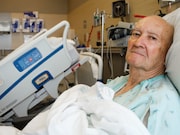Perioperative covert stroke tied to increased risk for cognitive decline one year after surgery
FRIDAY, Aug. 16, 2019 (HealthDay News) — Seven percent of older patients undergoing inpatient, noncardiac surgery have perioperative covert stroke, which is associated with an increased risk for cognitive decline, according to a study published online Aug. 15 in The Lancet.
Marko Mrkobrada, M.D., from the University of Western Ontario in London, Canada, and colleagues conducted a prospective cohort study in 12 academic centers in nine countries. A total of 1,114 patients aged 65 years or older who underwent inpatient, elective, noncardiac surgery and had brain magnetic resonance imaging (MRI) after surgery were included. MRIs were assessed for acute brain infarction by two independent neuroradiology experts.
The researchers found that 7 percent of participants had a perioperative covert stroke. Among those who completed one year of follow-up, cognitive decline occurred one year after surgery in 42 percent of the 69 participants with perioperative covert stroke and in 29 percent of the 932 participants without perioperative covert stroke (adjusted odds ratio, 1.98; absolute risk increase, 13 percent). There were also correlations for covert stroke with an increased risk for perioperative delirium (hazard ratio, 2.24; absolute risk increase, 6 percent) and overt stroke or transient ischemic attack at one-year follow-up (hazard ratio, 4.13; absolute risk increase, 3 percent).
“There is a need for research to inform the cause of perioperative covert stroke and establish whether prevention and management strategies avert cognitive decline,” the authors write.
Several authors disclosed financial ties to the pharmaceutical industry.
Copyright © 2019 HealthDay. All rights reserved.








